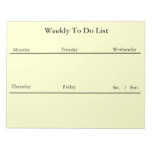The federal government raised the minimum wage that federal contractors must pay to its workers and the Administration is pushing for a national minimum wage increase to $10.10 per hour.
The Department of Labor says it will benefit 28 million workers. Opponents of the increase argue that it will hurt small business.
Where do small business owners stand?
Find more details about state minimum wage legislation from the NCSL.
The increased wages actually saved the company money in rehiring and retraining costs. But many claim that there were two important byproducts of this action:
One Forbes opinion piece says it’s “ridiculous” to apply the Ford model to the current McDonald’s controversy where workers are advocated for $15 per hour—will it enable workers to buy more burgers?
Where do small business owners stand?
Opinion polls
Of course, it depends who you ask. According to some polls, the majority of small business owners would support an increase:- American Sustainable Business Council found that 53% did so citing that “businesses would benefit from lower employee turnover and increased productivity and customer satisfaction.”
- Small Business Majority found that 57% would support an increase in 3 stages.
- Think Progress found 61% supported an increase.
Reality check: Minimum wages are already higher
Regardless of what small business owners would or would not prefer, the majority of states have already increased their minimum rate to an amount higher than the current federal rate of $7.25 per hour. In 2014, the following locations have rates higher than the federal rate (amounts in parentheses are rates effective in 2015 and beyond):- Alaska: $7.75
- Arizona: $7.90
- California: $9.00 ($10 starting in 2016)
- Connecticut: $8.70 ($9.15 in 2015; $9.60 in 2016; $10.10 in 2017)
- Delaware: $7.75
- D.C.: $9.50 ($10.50 in 2015; $11.50 in 2016)
- Florida: $7.93
- Hawaii: ($7.75 in 2015; $8.50 in 2016; $9.25 in 2017; $10.10 in 2018)
- Illinois: $8.25
- Maine: $7.50
- Maryland: ($8.00 and $8.25 in 2015; $8.75 in 2016; $9.25 in 2017; $10.10 in 2018)
- Massachusetts: $8.00 ($9 in 2015; $10 in 2016; $11 in 2017)
- Michigan: $7.40; $8.15 on 9/1 ($8.50 in 2016; $8.90 in 2017; $9.25 in 2018)
- Missouri: $7.50
- Montana: $7.90
- Nevada: $8.25
- New Jersey: $8.25
- New Mexico: $7.50
- New York: $8.00 ($8.75 in 2015; $9 in 2016)
- Ohio: $7.95
- Oregon: $9.10
- Rhode Island: $8 ($9 in 2015)
- Vermont: $8.73 ($9.15 in 2015; $9.60 in 2016; $10 in 2017; $10.50 in 2018)
- Washington: $9.32
- West Virginia: ($8 in 2015; $8.75 in 2016)
Find more details about state minimum wage legislation from the NCSL.
Henry Ford model
In 1914, Henry Ford more than doubled the daily wage to $5 of workers in his Model T factories (he also cut the work day from 9 to 8 hours). He did this to reduce worker turnover (many could not take the monotony of the assembly line).The increased wages actually saved the company money in rehiring and retraining costs. But many claim that there were two important byproducts of this action:
- It created goodwill (his actions were reported worldwide)—this increased car sales.
- It created consumers (his workers earned enough so they could afford to buy his cars).
One Forbes opinion piece says it’s “ridiculous” to apply the Ford model to the current McDonald’s controversy where workers are advocated for $15 per hour—will it enable workers to buy more burgers?






No comments:
Post a Comment